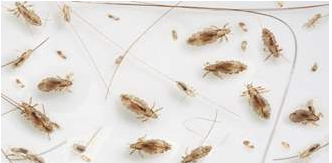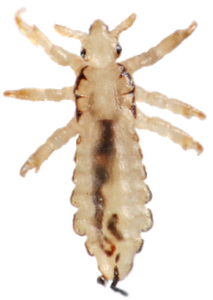Lice

There are several lice species found worldwide. The most common kinds of lice include head lice, body lice and crab lice. Only the body louse can transmit diseases to people.
Regardless of what type of lice species is bugging you, prevention is key. The best way to prevent contact with lice is to avoid using other people’s combs, hats, towels, etc. It’s also recommended to have someone check your scalp at least once a month to make sure you have not been exposed.
Human Lice

Lice and dandruff can cause similar symptoms in some people; however, they are very different. Louse eggs are very small and firmly attach to the hair shaft, while dandruff looks like flakey skin, which is typically white to yellowish in color. It can be found in various parts of the scalp. Unlike lice, dandruff is not contagious.
The presence of eggs/nits is the most significant indication of a head lice problem because they are more numerous than other forms of lice, not active, and not easily removed. Scratching the scalp is also a reason to suspect a head louse problem. The socioeconomic status or income level of the person or family has little to do with who gets infested. Infestations are particularly common among younger school children. Girls are up to five percent more likely to be infected than boys.
If you are concerned that you may have lice, wash all clothes, bedding, combs, towels, etc. You can also use special combs, shampoos, and conditioners designed specifically to get rid of lice. Also, try saturating hair with baby oil at night to kill both lice and their eggs. If you do this, wrap a towel around your head to keep from soiling your bedding, and be sure to wash your hair thoroughly in the morning.
Contact Entotox office in your region for pest management and extermination plan.



